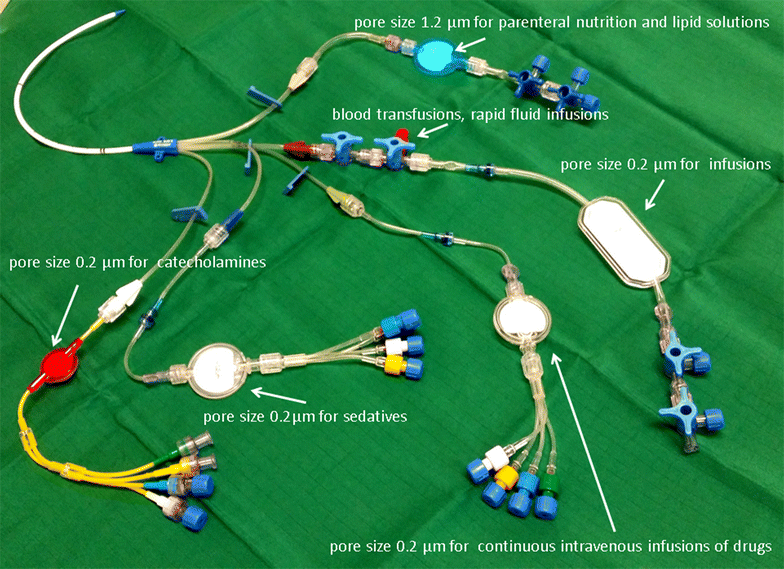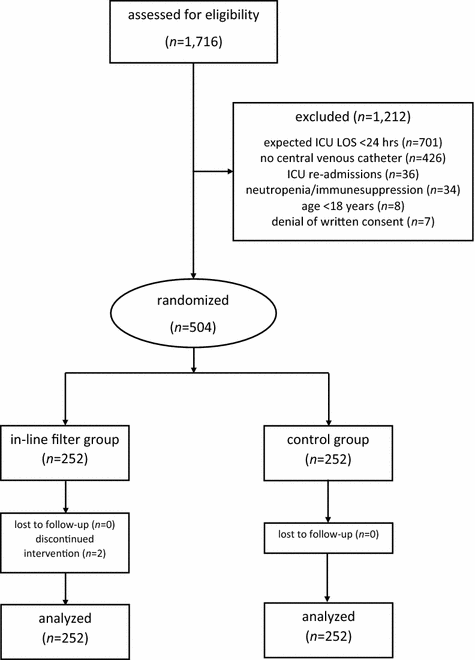Influence of in-line microfilters on systemic inflammation in adult critically ill patients: a prospective, randomized, controlled open-label trial
- PMID: 26538309
- PMCID: PMC4633471
- DOI: 10.1186/s13613-015-0080-x
Influence of in-line microfilters on systemic inflammation in adult critically ill patients: a prospective, randomized, controlled open-label trial
Abstract
Background: In critically ill children, in-line microfilters may reduce the incidence of the systemic inflammatory response syndrome (SIRS), the overall complication and organ dysfunction rate. No data on the use of in-line microfilters exist in critically ill adults.
Methods: In this prospective, randomized, controlled open-label study, we evaluated the influence of in-line microfilters on systemic immune activation in 504 critically ill adults with a central venous catheter in place and an expected length of stay in the intensive care unit >24 h. Patients were randomized to have in-line microfilters placed into all intravenous lines (intervention group) or usual care (control group). The primary endpoint was the number of intensive care unit days with SIRS. Secondary endpoints were the incidence of SIRS, SIRS criteria per day, duration of invasive mechanical ventilation, intensive care unit length of stay, the incidence of acute lung injury, maximum C-reactive protein, maximum white blood cell count, incidence of new candida and/or central-line-associated bloodstream infections, incidence of new thromboembolic complications, cumulative insulin requirements and presence of hyper- or hypoglycemia.
Results: The study groups did not differ in any baseline variable. There was no difference in the number of days in the intensive care unit with SIRS between microfilter and control patients [2 (0.8-4.7) vs. 1.8 (0.7-4.4), p = 0.62]. Except for a higher incidence of SIRS in microfilter patients (99.6 vs. 96.8 %, p = 0.04), no difference between the groups was observed in any secondary outcome parameter. Results did not change when only patients with an intensive care unit length of stay of greater than 7 days were included in the analysis. The rate of adverse events was comparable between microfilter and control patients. In two patients allocated to the microfilter group, the study intervention was discontinued for technical reasons. Use of in-line microfilters was associated with additional costs.
Conclusions: The use of in-line microfilters failed to modulate systemic inflammation and clinical outcome parameters in critically ill adults.
Trial registration: Clinical Trials NCT01534390.
Keywords: Adults; C-Reactive protein; Critically ill; In-line microfilter; Systemic inflammation.
Figures
References
-
- Nemec K, kopelent-Frank H, Greif R. Standardization of infusion solutions to reduce the risk of incompatibility. Am J Health Syst Pharm. 2008;65:1648-54. - PubMed
Associated data
LinkOut - more resources
Full Text Sources
Other Literature Sources
Medical
Research Materials




